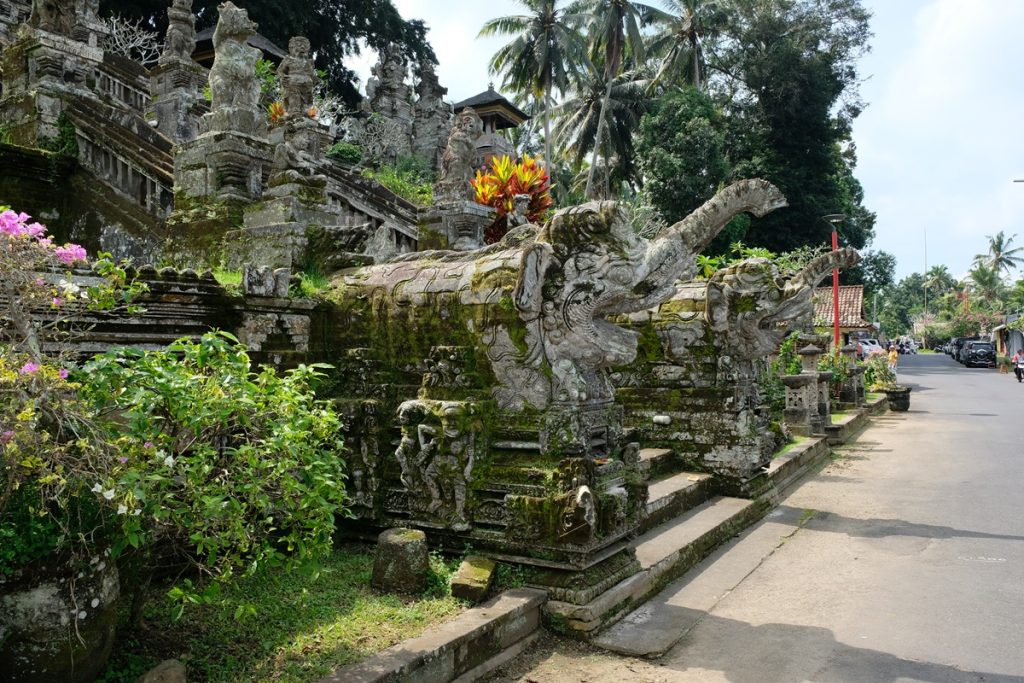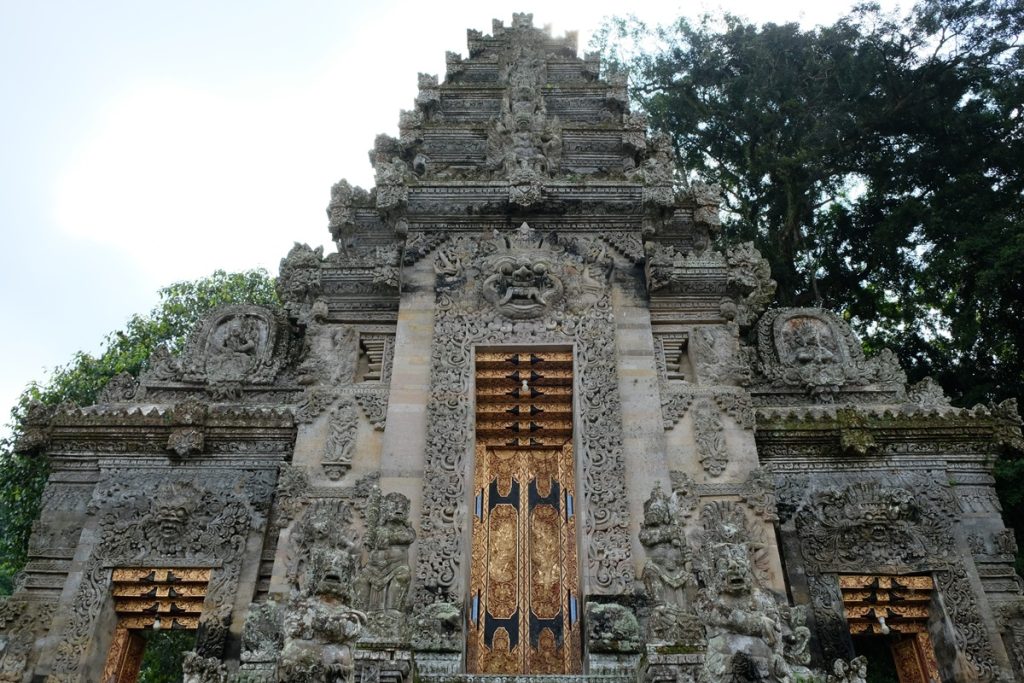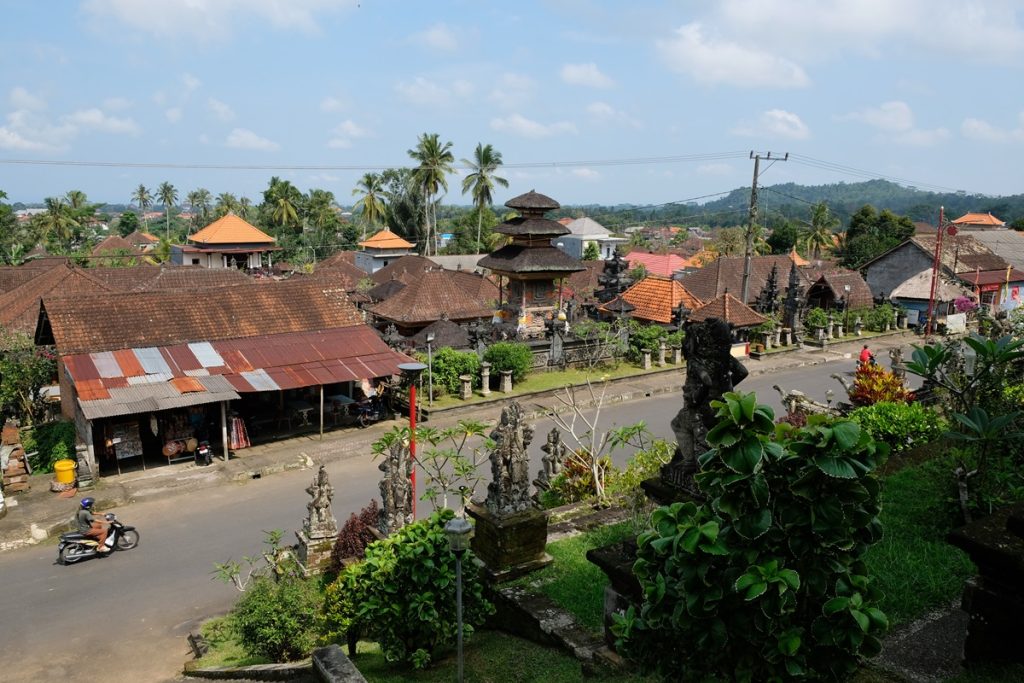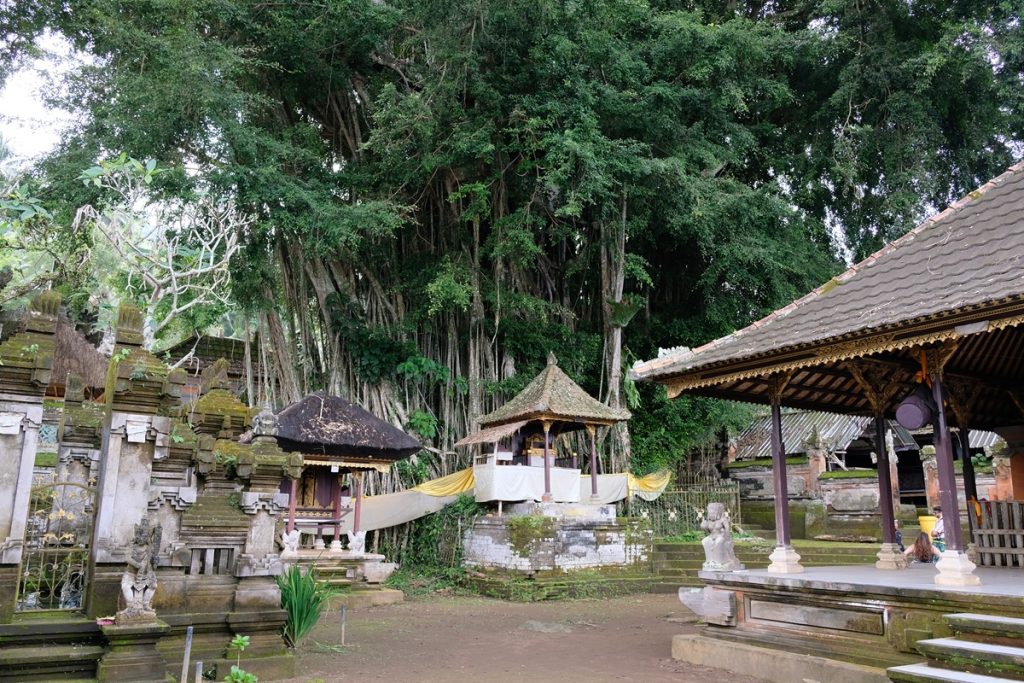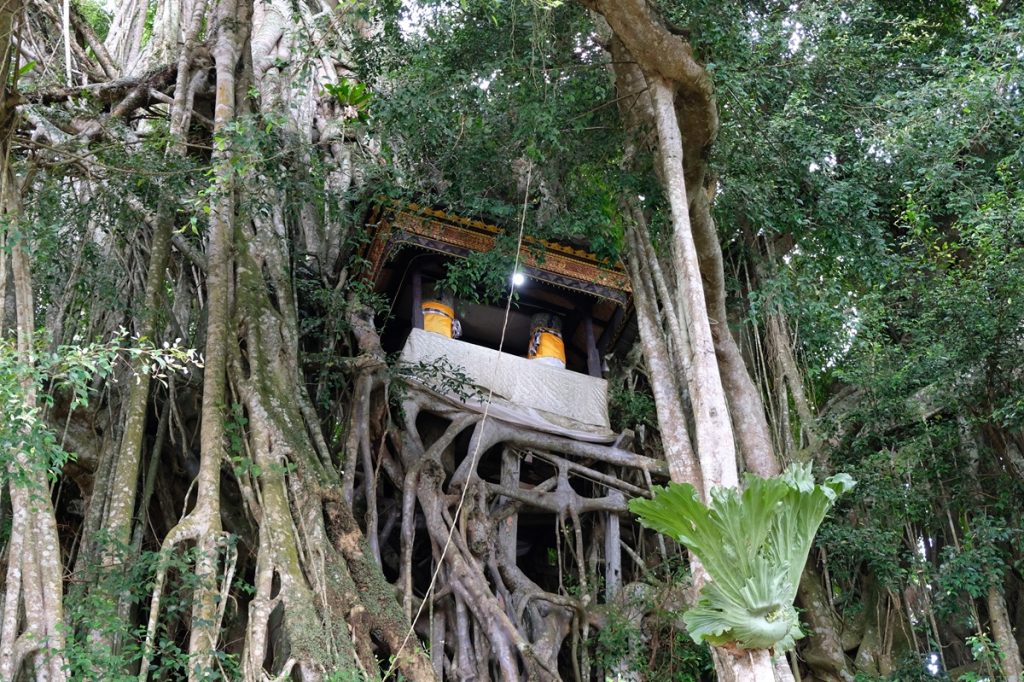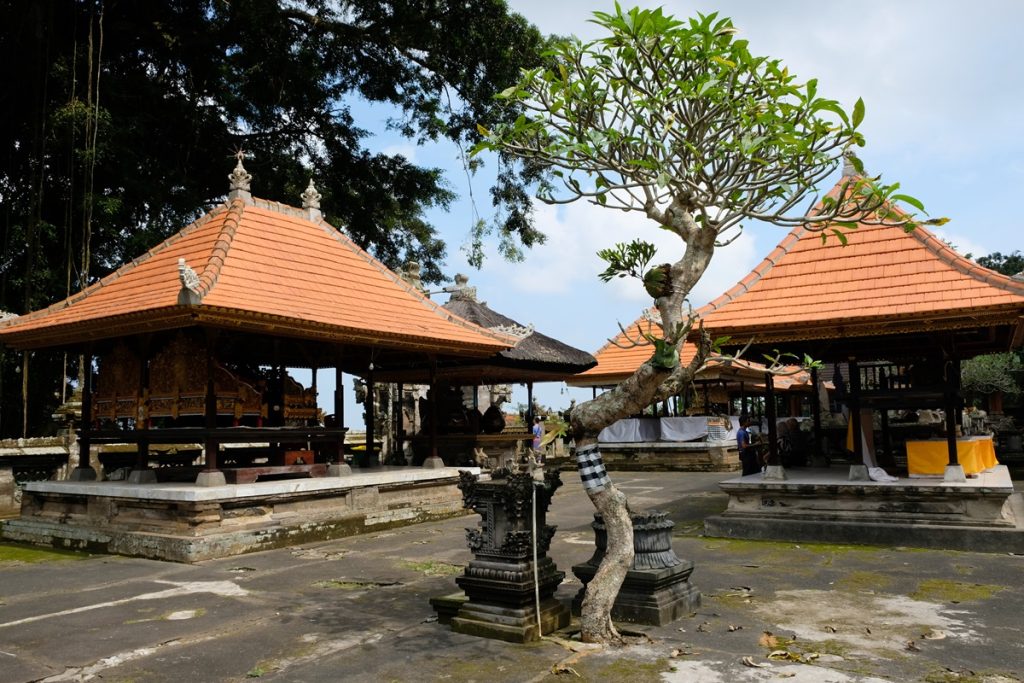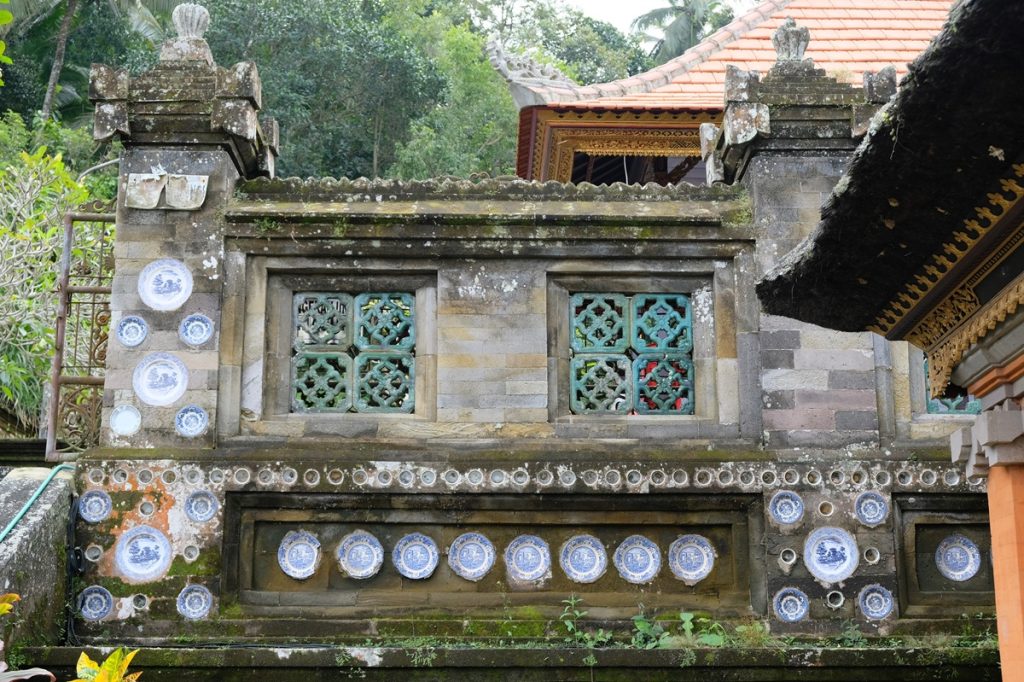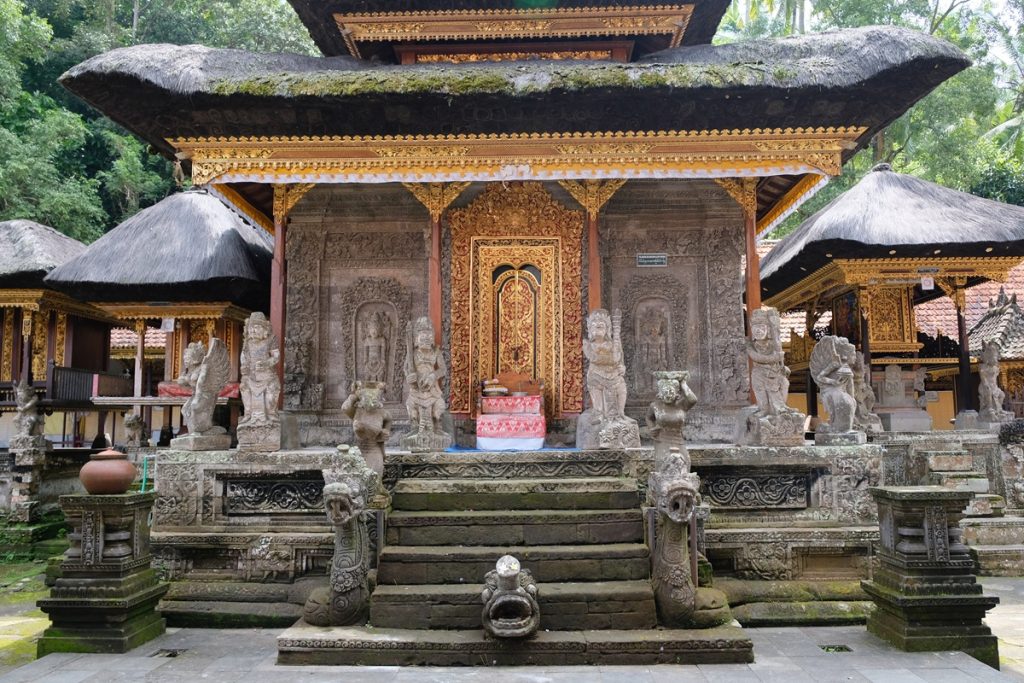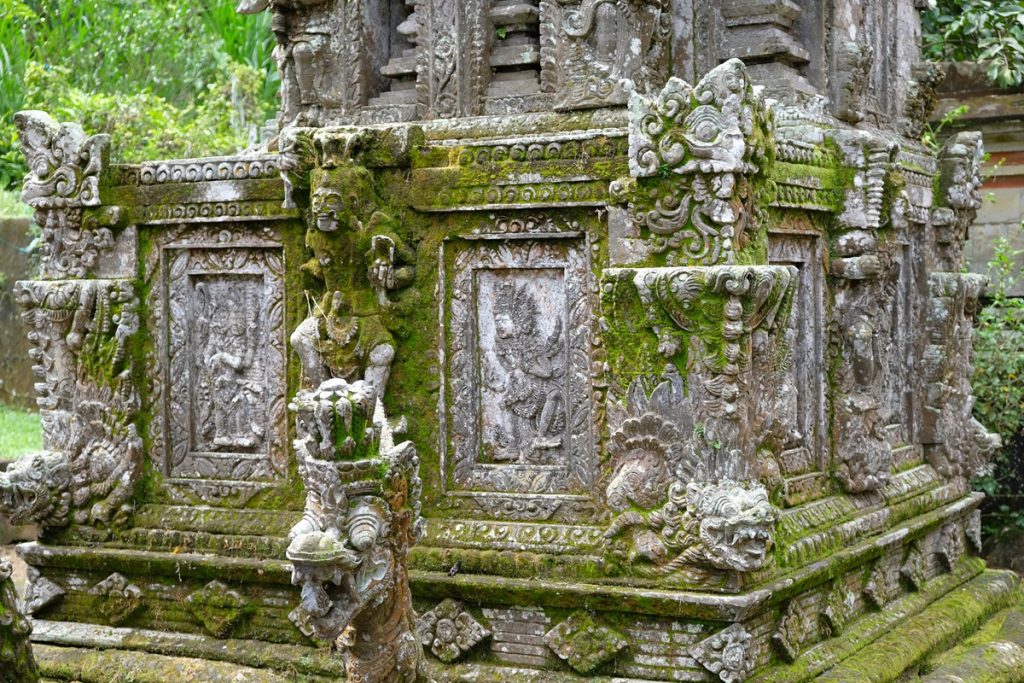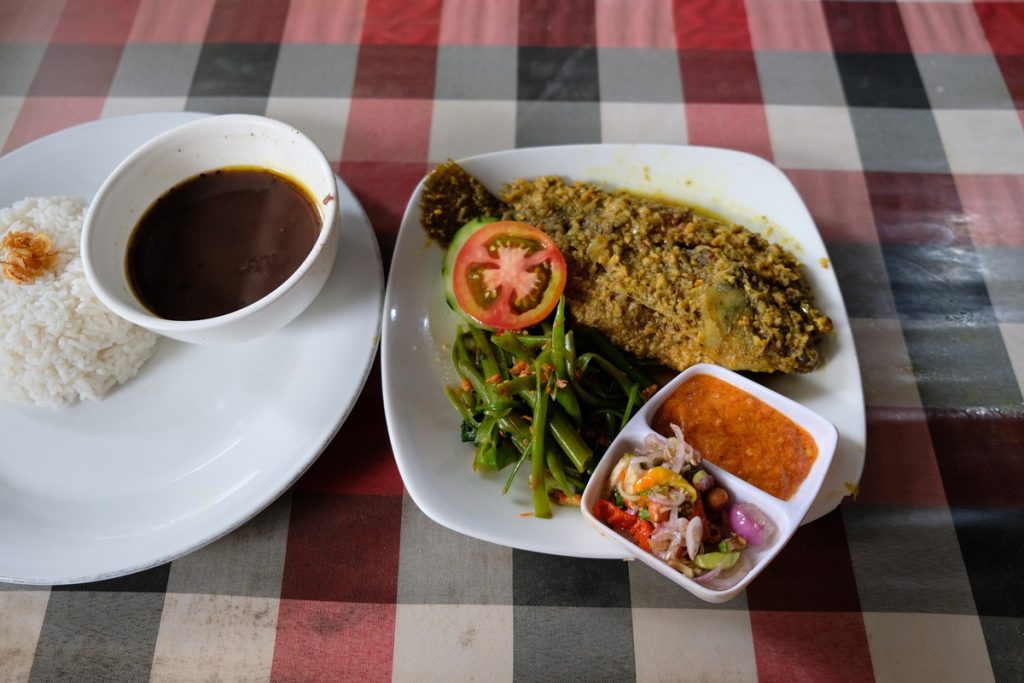I first tasted loloh cemcem at a Balinese restaurant in Jakarta days after its opening in June 2022. When we saw it on the menu, James and I decided to give it a try out of curiosity, thanks to the green elixir’s color and unfamiliar name. It came in a medium-sized clear glass bottle with a resealable swing top, just enough to contain two shots of the herbal drink. It obviously looked healthy, but its taste was harder to describe: there was a hint of sweetness with subtle tanginess as well as a touch of saltiness and a slightly warming sensation that together was unlike anything we’d ever had. Little did we know that our trip to Bali exactly two years later in June 2024 would take us to Penglipuran, the village where this healing potion originated.
Despite its location in the lush interior of Bali far from the island’s mass tourism hub in the south, Penglipuran is quite popular among tourists. A picture-perfect traditional village that always appears to be neat and clean certainly attracts curious visitors who will then share their photos on social media. In fact, this was how this place came to my attention many years ago. However, having visited numerous traditional villages in Indonesia, I wasn’t too convinced with the images of Penglipuran that all seemed too good to be true. I wondered if it would turn out to be a tourist trap.
Years later, after several more trips to Bali and further research on Penglipuran, I realized that it is indeed a real village where people actually live, not one set up as a theme park. Naturally, I was intrigued. And on our latest trip to the island, we thought it would be a good idea to check it out while also visiting other interesting places in the area. With Yana at the wheel, we headed to Bangli in the eastern-central part of the island.
As one of the regencies (the administrative unit of a province in Indonesia) of Bali, Bangli occupies parts of the island which roughly correspond to the region an eponymous kingdom once controlled. Established in the 15th century as a vassal of a larger kingdom that ruled the entirety of Bali and a few neighboring islands, Bangli only gained its sovereignty two centuries later in 1686. In the early 19th century, following the demise of the Dutch East India Company (the VOC), the Dutch colonial government took control of the company’s former possessions, including the highly strategic and economically important ports in what is now Indonesia. It was during this period when the Dutch consolidated its colonial grip on the vast archipelago through political interventions that pitted local kingdoms against each other, resulting in agreements that often benefitted the European power. Bali was no exception. And in 1909, Bangli became the last kingdom on the island the Dutch subjugated.
It is said that the centuries-old village of Penglipuran situated in the southern part of his realm was a gift from the king of Bangli to his people who helped fight a neighboring kingdom to the west. The 21st-century Penglipuran, however, was a busy place when we arrived. While the numbers of independent visitors and foreign tourists were relatively small, there were large groups of students from different schools in Java who were bused to this place on their field trips to Bali. Busy is an understatement, although luckily in general they behaved in quite an orderly manner. But I can imagine how peaceful this village must be early in the morning or late in the afternoon without the presence of big tour groups.
We walked along the main street of the village (where everyone was), and explored some of its alleys and backyards (which only a trickle of visitors bothered to check out). It was here, at one of the houses that left their gates open, where I spotted the green elixir that turned out to be loloh cemcem. Made from the leaves of Spondia pinnata (a relative of the ambarella) mixed with the flesh of young coconut, chilies, palm sugar, and tamarind, the drink really is the product of the biodiversity of plants around the village. “It’s very typical of Penglipuran,” Yana, who is from Ubud, explained. With a bottle of cold loloh cemcem in our hands, we walked toward the exit to end our poorly-timed visit to what was otherwise a very photogenic, living traditional village.
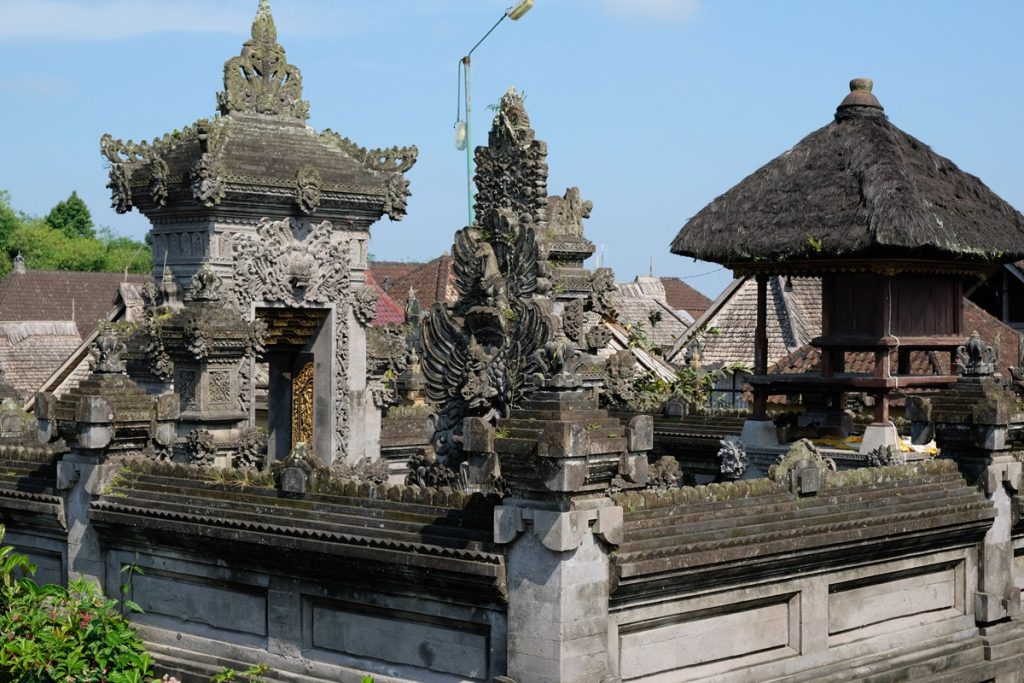
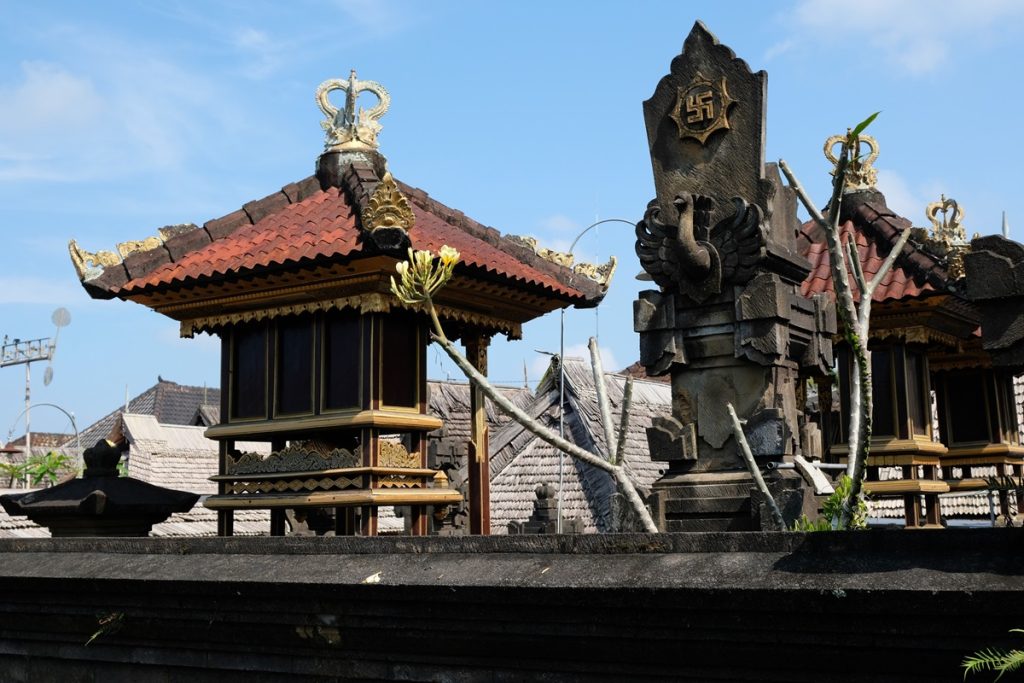
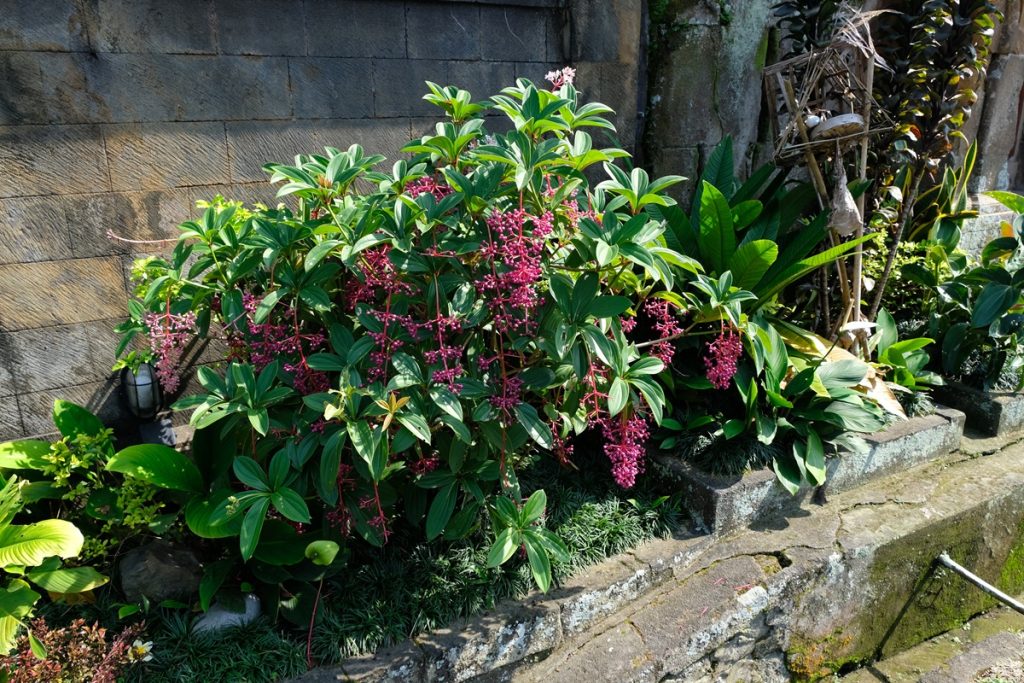
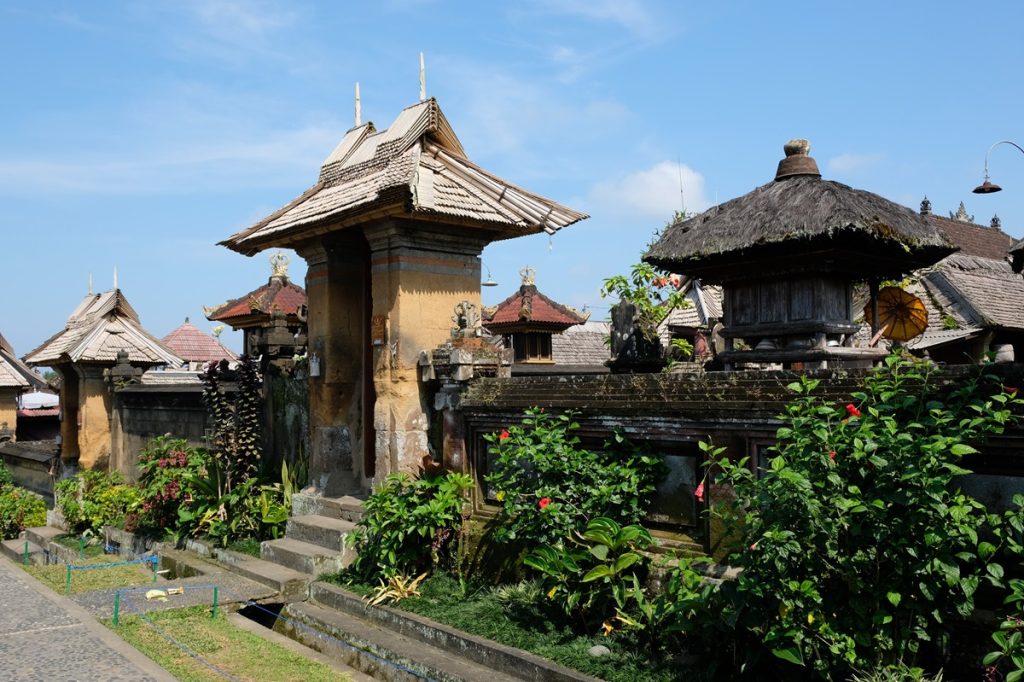
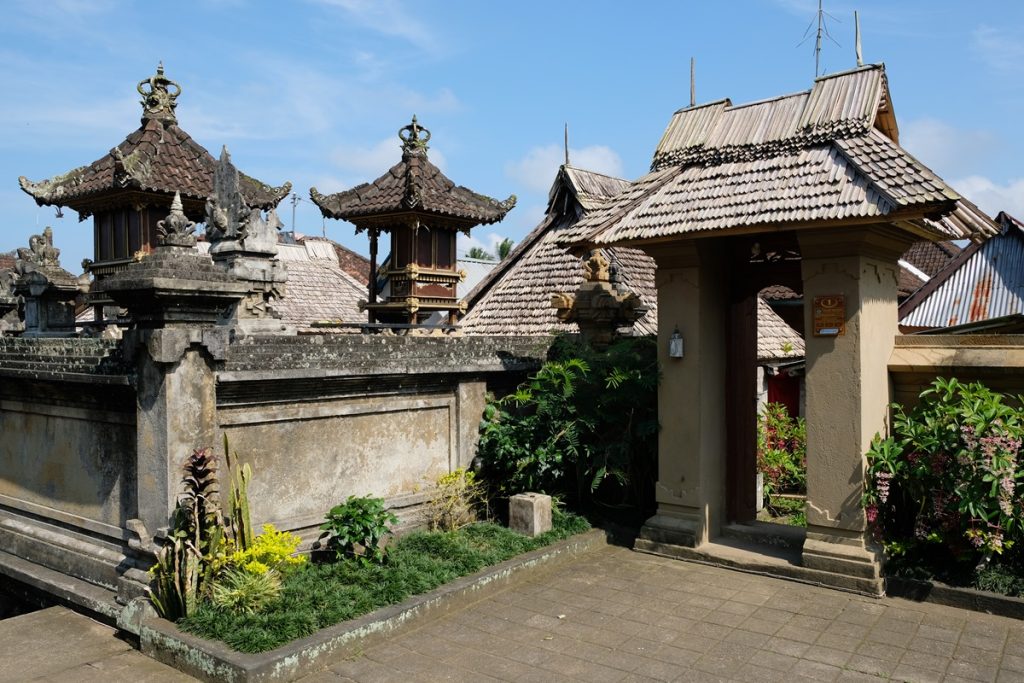
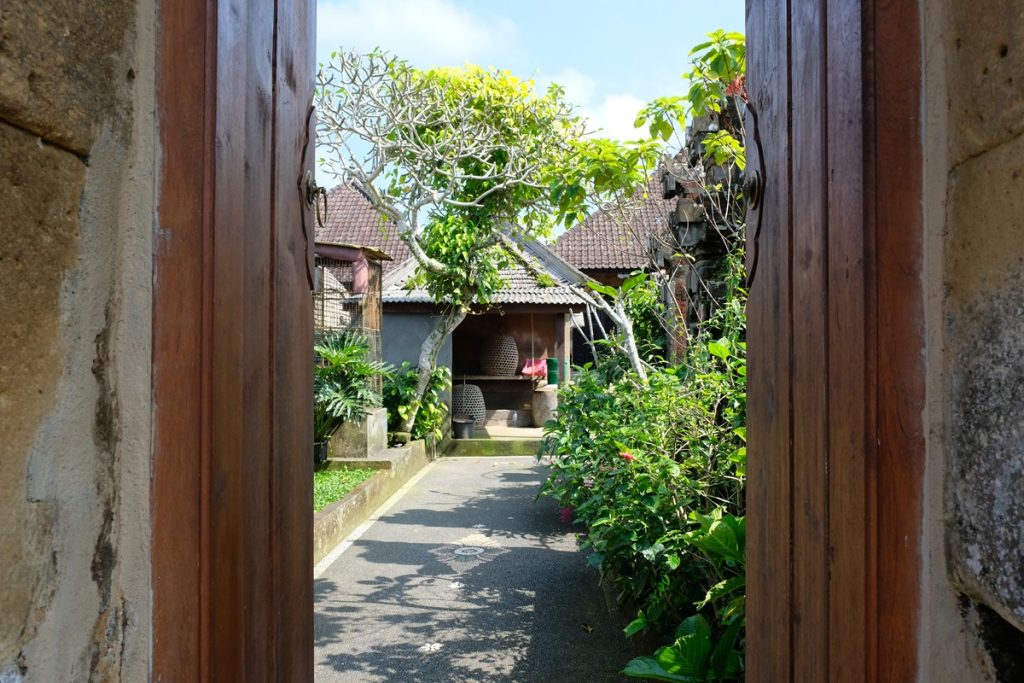
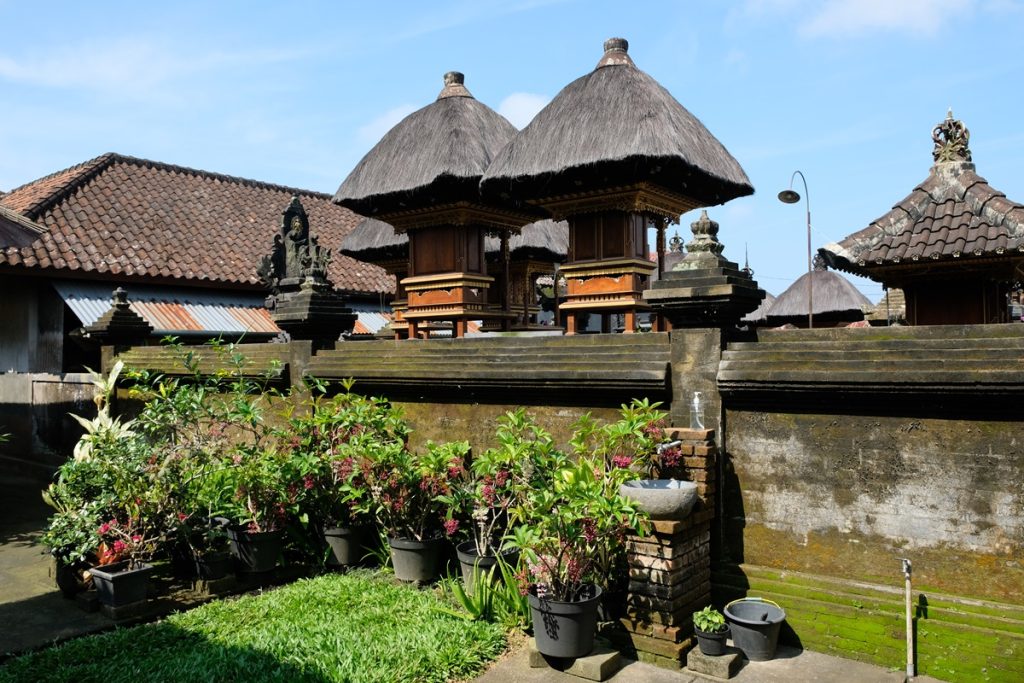
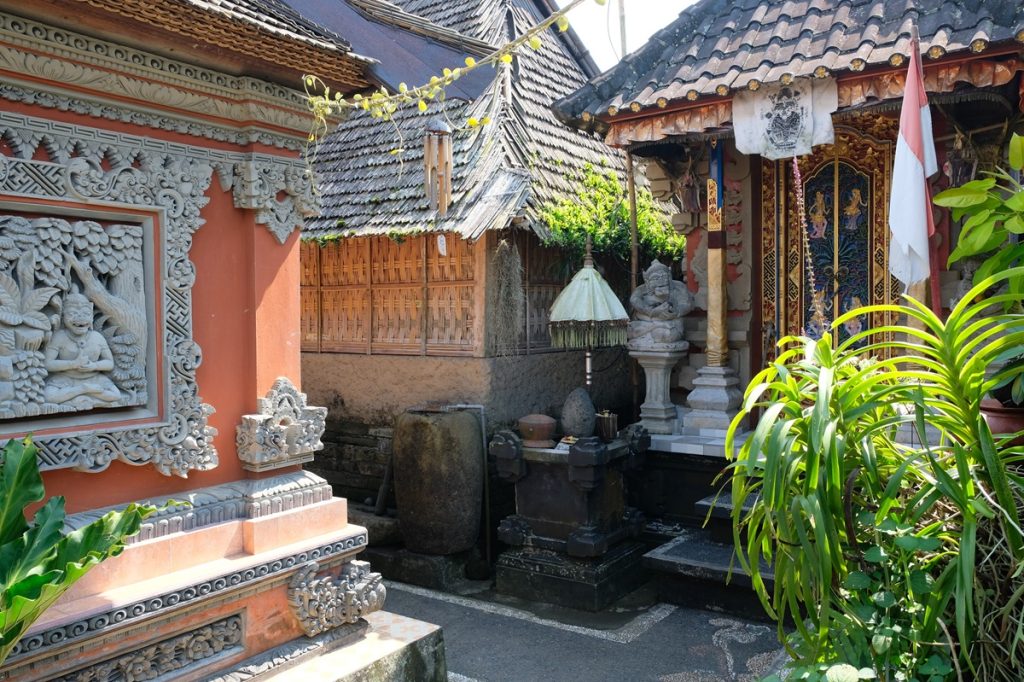
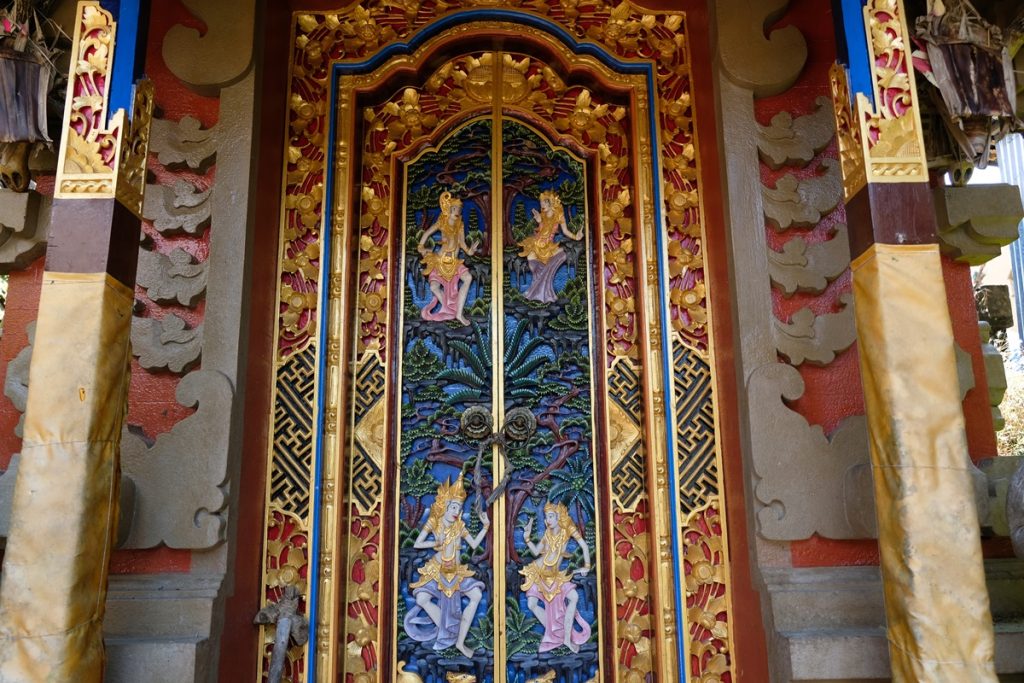
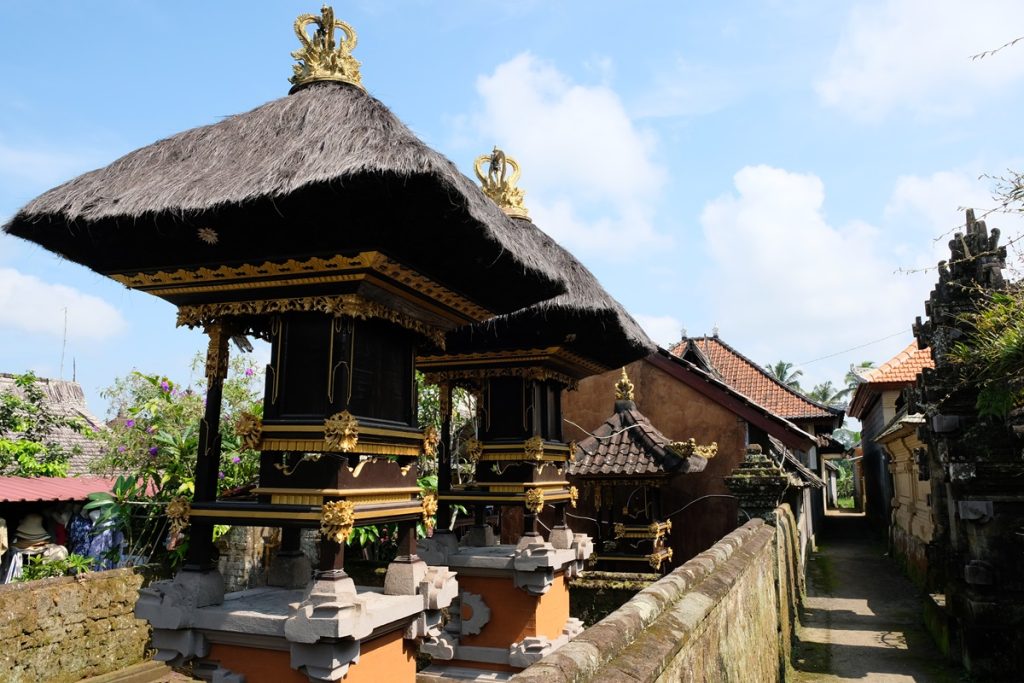
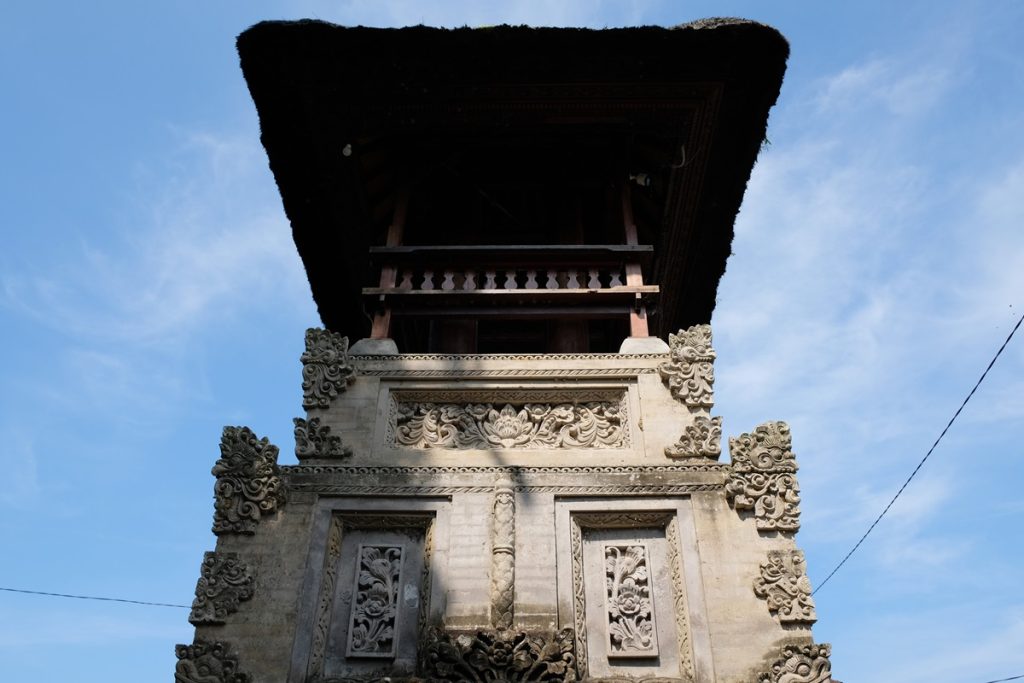
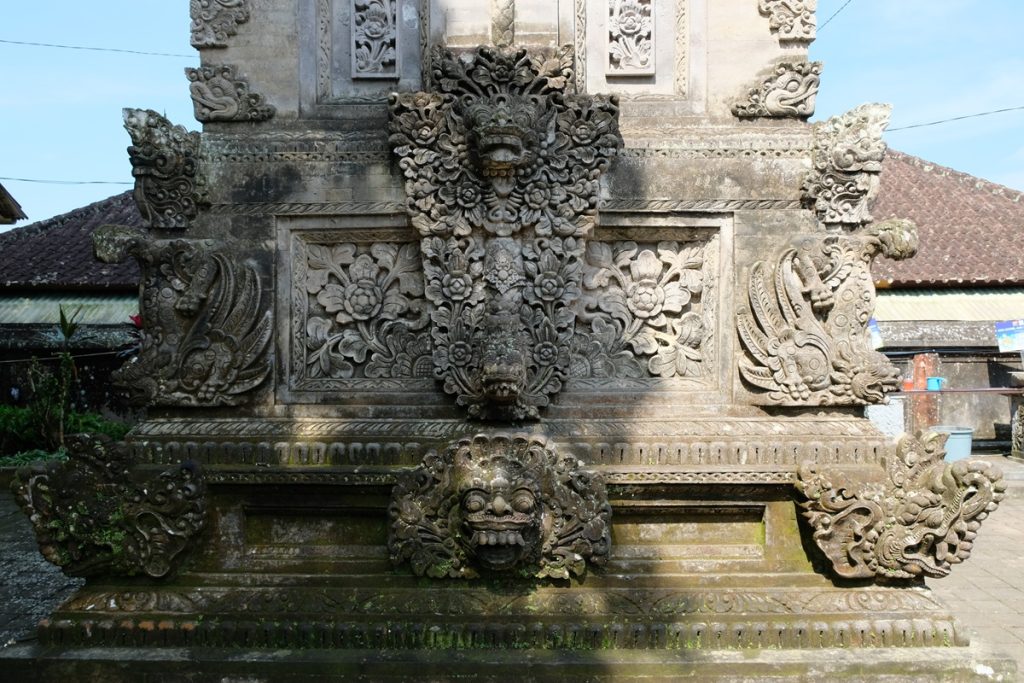
We continued our exploration of Bangli at Pura Kehen, an ancient Balinese Hindu temple located a 4-kilometer-drive to the south of Penglipuran. In stark contrast to the village, the temple was almost deserted, with only a handful of other visitors in sight. There is no definitive answer to the question of when this compound was built, apart from some inscriptions indirectly suggesting that a temple might have existed at this location since the ninth or tenth century CE. However, Pura Kehen’s dramatic location on the slope of a hill is enough to distract anyone from their curiosity about its origin.
First, you need to take a flight of stairs to reach the highly-ornamented gate. Then, in the lower courtyard you will be greeted by a large banyan where a structure is curiously perched on the tree as if it was hugged by the stranglers. Going up to the main courtyard – where the compound’s most sacred ensemble sits – will most likely bring your attention to the blue porcelain plates mounted along the inner enclosure, a rare sight at Balinese Hindu temples. Finally, as you arrive at the main courtyard your eyes will be pleased by the captivating beauty of multi-tiered ijuk roofs sitting atop brick and wooden structures, each embellished with intricate carvings. This serenity must have been omnipresent all over the island before it became a tourism hotspot. If anything, Pura Kehen is proof that the old charm of Bali is still alive.
After soaking in the calm ambiance, with the occasional sound of passing motorbikes and cars breaking the silence, we ambled across the temple toward the exit. From here, tall coconut palms piercing the sky amid roofs of traditional houses provided a vista many would describe as “exotic”. We rendezvoused with Yana, and before going back to our homestay in Bedugul, we asked him to stop at a local eatery known for its mujair nyat-nyat.
Nyat-nyat itself refers to a Balinese cooking method where liquid (water or broth) that is added to cook the protein is reduced until it becomes a thickened sauce. Due to Bangli’s landlocked location, freshwater fish is widely used to make the dish, and we opted for the place’s specialty: mujair (a type of tilapia). The fish which was generously coated with the yellowish sauce came with plecing kangkung (blanched water spinach served cold with sambal made from red and bird’s eye chilies, kaffir lime, shallot, garlic, candlenut, and a few other ingredients), jukut undis (Balinese stew made from a type of legume known as the pigeon pea), and two types of sambal. We really enjoyed it, so much so we recommended it to our blogging friend Madhu who visited Bali for the first time just two months later. She told us that it was among the most delicious Indonesian dishes she had on the island.
With full stomachs, we were tempted to call it a day and return to our homestay. But not before visiting an art museum in Ubud since it wouldn’t require a major detour. Nevertheless, the rest of the day felt easy, just like the lunch we had.
